Diwali – “The Festival of Lights”
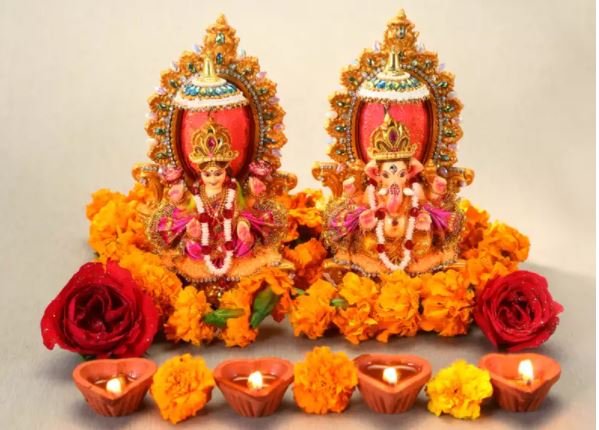

India is a land of festivals, where people from all religions live in harmony with each other. India is a true manifestation of its rich culture and traditions which can be viewed by a number of festivals that are celebrated every day. Although the Festival of Land has many festivals and celebrations on its platter, among all the ones which all Hindus wait enthusiastically is the festival of lights i.e., “Diwali”. Though the celebrations happen all over the year but from October till January is the time when the country can be seen at its vibrant best.
Diwali is also commonly called Divali or Deepawali. The name Diwali comes from the Sanskrit word “Dipavali”, meaning “Row of Lights.”
Diwali is celebrated during the Hindu month of Kartik (autumn (or spring, in the southern hemisphere) as per the Georgian Calendar). The month of Kartik begins around mid-October and ends in mid-November. Specifically, Diwali occurs on the darkest day of the lunar month, which is the day of the new Moon.

Diwali is celebrated by Hindu, Sikh, Jain, and even Buddhist communities throughout the world. It has also been seen that in the United Kingdom, United States, Australia, and other parts of the world, some native communities also celebrate Diwali.
Diwali is the main Hindu festival which is celebrated over five days from Kashmir to Kanyakumari and from Jaisalmer to Itanagar with great Splendor.
Diwali is not only celebrated throughout India but also in Singapore, and several other South Asian countries as a national holiday, which shows that people outside these religions also participate in Diwali celebrations.
Diwali has also become a cultural event in North America that’s celebrated with Puja, Dance, Sweets, and special Foods.
Diwali consists of a five-day celebration that peaks on the third day with the main celebration of the festival Diwali.
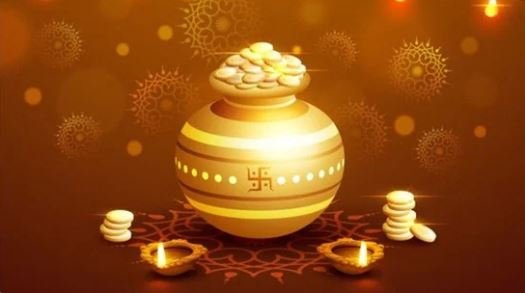
Dhanteras marks the first day of the five-day-long Diwali festival. Dhanteras Festival falls on the auspicious thirteenth lunar day of Krishna Paksha in the Hindu month of Kartik (October/November). In the word Dhanteras, “Dhan” stands for wealth. On Dhanteras Maa Laxmi is worshiped to provide prosperity and wellbeing. Hence Dhanteras holds a lot more significance for the business community.
Dhanteras is also called “Dhanatrayodashi”, “Dhanwantari Triodasi “,” Yamadeepdaan”,” Dhan Teyras”,” Aswayuja Bahula Thrayodashi” “, “Dhantheran” in India.
A very interesting story about Dhanteras Festival says that the once the 16-year-old son of King Hima. was doomed to die by a snake bite on the fourth day of his marriage as per his horoscope. On that particular fourth day of his marriage, his young wife did not allow him to sleep. She laid all the ornaments and lots of gold and silver coins in a big heap at the entrance of her husband’s boudoir and lighted innumerable lamps all over the place. And she went on telling stories and singing songs.
When Yama, the god of Death arrived there in the guise of a Serpent his eyes got blinded by that dazzle of those brilliant lights and he could not enter the prince’s chamber. So, he climbed on top of the heap of ornaments and coins and sat there whole night listening to the melodious songs. In the morning he quietly went away. Thus, the young wife saved her husband from the clutches of death. Since then, this day of Dhanteras came to be known as the day of “Yamadeepdaan” and lamps are kept burning throughout the night in reverential adoration to Yam, the god of Death.

According to another popular legend, when the gods and demons churned the ocean for Amrit or nectar, Dhanvantari (the physician of the gods and an incarnation of Vishnu) emerged carrying a jar of the elixir on the day of Dhanteras.
To mark the auspicious day, houses and business premises are renovated and decorated. Entrances are made colorful with lovely traditional motifs of Rangoli designs to welcome the Goddess of Wealth and Prosperity. To indicate her long-awaited arrival, small footprints are drawn with rice flour and vermilion powder all over the houses. Lamps are kept burning all through the night.
On Dhanteras Hindus consider it auspicious to purchase gold or silver articles or at least one or two new utensils. It is believed that the new “Dhan” or some form of precious metal is a sign of good luck. “Laxmi-Puja” is performed in the evenings when tiny Diyas of clay are lighted to drive away from the shadows of evil spirits. “Bhajans”, the devotional songs in praise of Maa Laxmi are also sung.
Dhanteras Celebrations
Dhanteras is celebrated with gusto and enthusiasm. “Lakshmi-Puja” is performed in the evenings when tiny Diyas of clay are lighted to drive away from the shadows of evil spirits. Bhajans or devotional songs- in praise of Maa Lakshmi are sung and “Naivedyam” of traditional sweets is offered to the Maha Lakshmi. There is a peculiar custom in Maharashtra to lightly pound dry coriander seeds with jaggery and offer as Naivedyam.
In villages, cattle are adorned and worshiped by farmers as they form the main source of their income. In the south, cows are offered special veneration as they are supposed to be the incarnation of Maa Lakshmi and therefore, they are adorned and worshiped on this day.
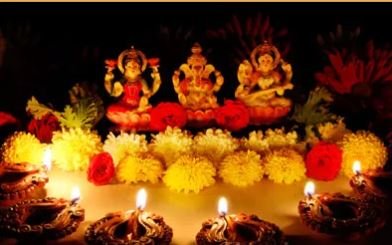
The day before Diwali is celebrated as “Choti Diwali “or “Small Diwali”. It is Diwali on a smaller scale, with fewer lights lit and fewer crackers burst. The morning after Choti Diwali, the women of the house make beautiful, colored rangoli in the doorway and courtyard. Tiny footprints made out of rice paste are a special feature of the rangolis made for Diwali. In Hindu homes, Choti Diwali celebrations involve a ritual puja to Maa Lakshmi and also to Rama in the evening. Songs in honor of the god are sung and aarti is performed.
It is also known by “Nark Chaturdashi”, “Roop Chaturdashi”, “Ali Choudas”, “Mahanisha”,” Kali Puja”, “Divvela Panduga”,” Divili Panduga” in different parts of India.
The story goes that the demon king Narakasura ruler of Pragjyotishpur, a province to the South of Nepal after defeating Lord Indra had snatched away the magnificent earrings of Aditi, the Mother Goddess who was the ruler of Suraloka and a relative of Satyabhama, Bhagwan Krishna’s wife and imprisoned sixteen thousand daughters of the gods and saints in his harem.
On coming to know about this, Satyabhama was enraged by Narakasura s malevolence towards women, and she appealed to Bhagwan Krishna to give her the golden chance to destroy Narakasura. The legend also says that Narakasura was given a curse that he would be killed by a woman. Bhagwan Krishna granted Satyabhama a boon to fight with Narakasura. With Bhagwan Krishna as the charioteer, Satyabhama entered the battlefield. During the war, Bhagwan Krishna swooned for a while, a preordained divinely act adopted to empower Satyabhama to kill the demon. After Narakasura was beheaded, the imprisoned women were released, and Bhagwan Krishna accepted to marry them.
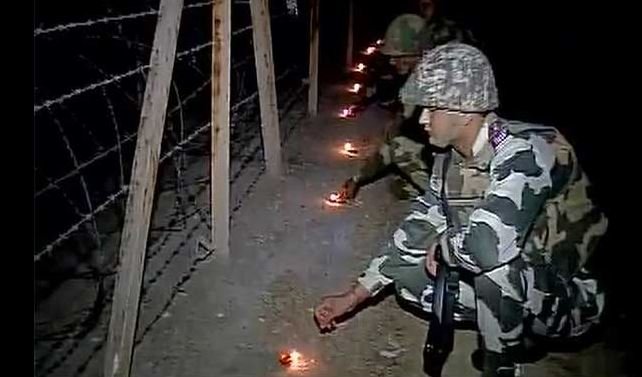
So, on the day previous to Naraka Chaturdashi, Bhagwan Krishna’s divine intervention led to the killing of the demon, Narakasura, and liberation of the imprisoned damsels as well as recovery of the precious earrings of Aditi. As a symbol of that victory, Bhagwan Krishna smeared his forehead with the demon king’s blood. Krishna returned home in the very early morning of the Naraka Chaturdashi day. The womenfolk massaged scented oil to his body and gave him a good bath to wash away the filth from his body. Since then, the custom of taking bath before sunrise on this day has become a traditional practice, especially in Maharashtra.
It is interesting to note that Bhudevi, mother of the slain Narakasura, declared that his death should not be a day of mourning but an occasion to celebrate and rejoice. Since then, Deepavali is being celebrated by people every year with joyous celebrations with a lot of fun and frolic, and fireworks.
However, In South India, that victory of the divine over the mundane is celebrated in a very peculiar way. People wake up before sunrise to prepare a paste by mixing Kumkum in oil, symbolizing blood, and after breaking a bitter fruit that represents the head of the demon King that was smashed by Shree Krishna, apply that mixture on their foreheads. Then they have an oil bath using sandalwood paste.
In Maharashtra also, traditional early baths with oil and “Upton” (paste) of gram flour and fragrant powders are a `must’. All through the ritual of baths, deafening sounds of crackers and fireworks are there in order that the children enjoy bathing. Afterward steamed vermicelli with milk and sugar or puffed rice with curd is served.
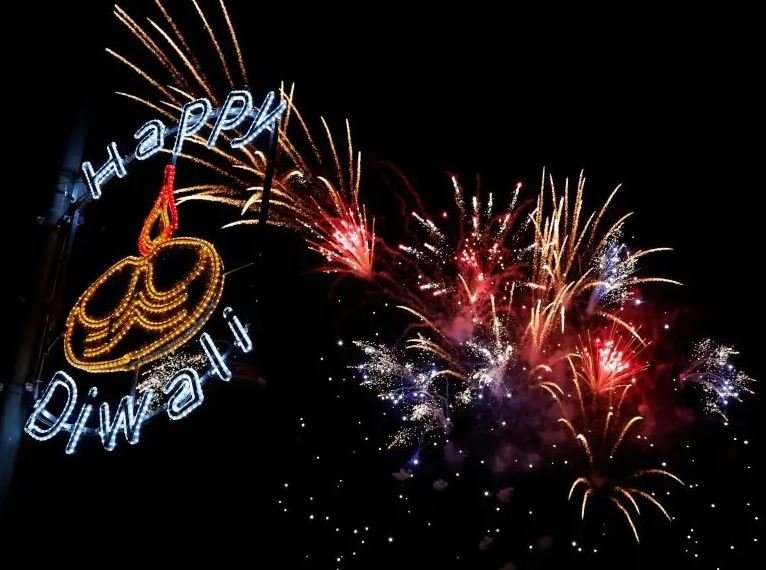
The third day of the Diwali festival is the most important one for Lakshmi-puja and is entirely devoted to the propitiation of Maa Lakshmi. On this very day, the sun enters his second course and passes Libra which is represented by the balance or scale. Hence, this design of Libra is believed to have suggested the balancing of account books and their closing. Despite the fact that this day falls on an “Amavasya” day it is regarded as the most auspicious.
The day of Lakshmi-Puja falls on the dark night of Amavasya. The strains of joyous sounds of bells and drums float from the temples as man is invoking Maa Lakshmi in a wondrous holy “pouring-in” of his heart. All of a sudden that impenetrable darkness is pierced by innumerable rays of light for just a moment and the next moment a blaze of light descends down to earth from heaven as golden-footed Deep-Lakshmi alights on earth in all her celestial glory amidst chanting of Vedic hymns.
A sublime light of knowledge dawns upon humanity and this self-enlightenment is expressed through the twinkling lamps that illuminate the palaces of the wealthy as well as the lowly abodes of the poor. It is believed that on this day Lakshmi walks through the green fields and loiters through the bye-lanes and showers her blessings on man for plenty and prosperity.
Diwali is also known by “Lakshmi Pujan”, “Chopda Pujan”,” Deva Divali”,” Sukhsuptika Kaumudi Mahostavam”, “Badhausar”,” Balindra Pooja”,” Karthigai Deepam”, “Thalai Deepavali”, “Sharda Pujan”,” Bandi Chhor Diwas”, “Diyari” in India.

Lakshmi Pooja, or the worship of the Maa of wealth, is the main event on Diwali in North and West India. It is extremely important to keep the house spotlessly clean and pure on Diwali. Maa Lakshmi likes cleanliness, and she will visit the cleanest house first. This is also the reason why the broom is worshiped on this day with offerings of haldi and Kumkum (turmeric and vermilion). Lamps are lit in the evening to welcome the Maa Lakshmi. They are believed to light up Her path.
Lakshmi Puja consists of a combined puja of five deities:
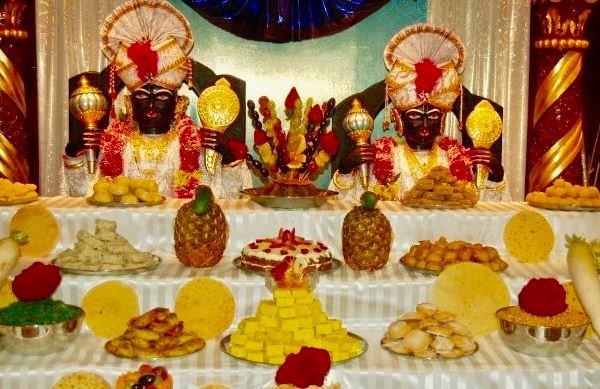
The day following the Amavasya is “Kartik Shuddh Padwa“ and it is only on this day that King Bali would come out of Pathal Loka and rule Bhulok as per the boon given by Bhagwan Vishnu. Hence, it is also known as “Bali Padyami“. This day also marks the coronation of King Vikramaditya and Vikaram-Samvat was started from this Padwa day. Goverdhan puja is known by different names “Bestavarsh”,”Gudi Padava,”Varsha Pratipada”, “Pratipad Padwa”,”Annakoot”,”Bali Padyam”,”Bali Pratipada”,”Muharat Pujan
Gudi Padwa is symbolic of love and devotion between the wife and husband. On this day newly-married daughters with their husbands are invited for special meals and given presents. In the olden days, brothers went to fetch their sisters from their in-law’s home for this important day.
Govardhan-Puja is performed in the North on this day. Govardhan is a small hillock in Braj, near Mathura and on this day of Diwali people of Punjab, Haryana, Uttar Pradesh, and Bihar build cow dung, hillocks, decorate them with flowers, and then worship them. This festival is “In commemoration of the lifting of Mount Govardhan by Krishna”.
As per Vishnu-Puran the people of Gokul used to celebrate a festival in honor of Lord Indra and worshiped him after the end of every monsoon season but one particular year the young Krishna stopped them from offering prayers to Lord Indra who in terrific anger sent a deluge to submerge Gokul.
People were afraid that the downpour was a result of their neglect of Indra. But Krishna assured them that no harm would befall them. He lifted Mount Govardhan with his little finger and sheltered men and beasts from the rain. This gave him the epithet Govardhan Hari. After this, Indra accepted the supremacy of Krishna.
The fourth day is also observed as Annakoot meaning mountain of food. Pious people keep awake the whole night and cook fifty-six or 108 different types of food for the Bhog (the offering of food) to Krishna. In temples especially in Mathura and Nathdwara, the deities are given milk baths, dressed in shining attires with ornaments of dazzling diamonds, pearls, rubies, and other precious stones. After the prayers and traditional worship, innumerable varieties of delicious sweets are ceremoniously raised in the form of a mountain before the deities as “Bhog“ and then the devotees approach the Mountain of Food and take Prasad from it.
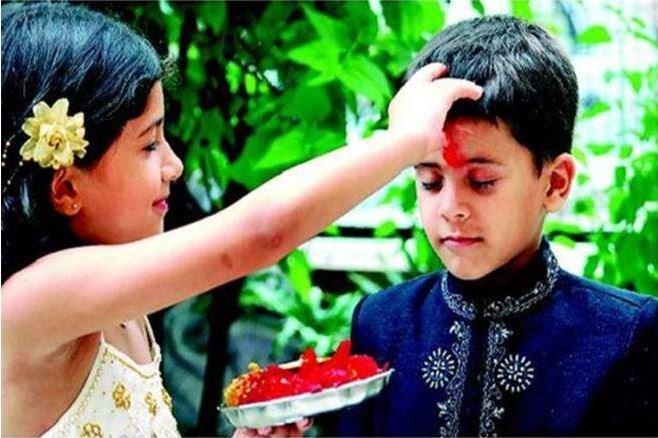
As Diwali, the festival of lights is a five-day-long celebration and the fifth or the last day of Diwali is Bhaiya Dooj, popularly known as Bhai Dooj. The reason why this festival is known as Bhai Dooj is that it falls on the second day after the new moon, which is the Dooj day. And it is a day to pray for the long life of the brother, which is referred to as “Bhaiya or Bhai”. Other names are “Bhai Phota”, “Bhaubeej”, “Bhav-Bij”, “Bhai-Tika”, “Yamadwitheya”, “Bhathru Dwithiya”, “Gorehabba”, “Bharti Ditya”, “Bhathru Dwithiya”.
According to religious scriptures, Yamaraj, the God of death, went to visit his sister’s house after a long period of separation. His sister, Yami was very happy to see him and welcomed him by putting an auspicious mark on his forehead for his welfare. Yami and Yamraj then shared a meal. He was so pleased with his sister’s reception, he proclaimed that every year, on the Dooj day, if a sister puts a tilak on her brother’s forehead, then no one can harm her brother. To date, this tradition is followed. Sisters perform puja for their brother’s safety and wellbeing. Brothers in return give gifts to their sisters as a token of love.
Another story in the scriptures is that Bhagwan Krishna after killing Narakasura, the asura king, went to meet his sister Subhadra. Subhadra welcomed him in the traditional way by showing him a light and putting on his forehead a tilak of her sisterly protection.
Some other legend says that Bhagwan Mahavir found nirvana, his brother Raja Nandi Vardhan missed his brother a lot. Sister Sudarshan then comforted his brother. Since then, women have been revered during this festival.
The festival of Diwali is incomplete without Bhai Dooj. It is referred to as “Bhaiyya-Duj” in the Hindi-speaking belt, “Bhav–Bij” in the Marathi-speaking communities, “Bhai Fota” in Bengal, and “Bhai-Tika” in Nepal.
The essence of the Bhai Dooj festival is that it is celebrated to strengthen the love between brothers and sisters. It is a day of food-sharing, gift-giving, and reaching out to the innermost depths of the hearts. Brothers and sisters indulge themselves on this day by gifting each other gifts.
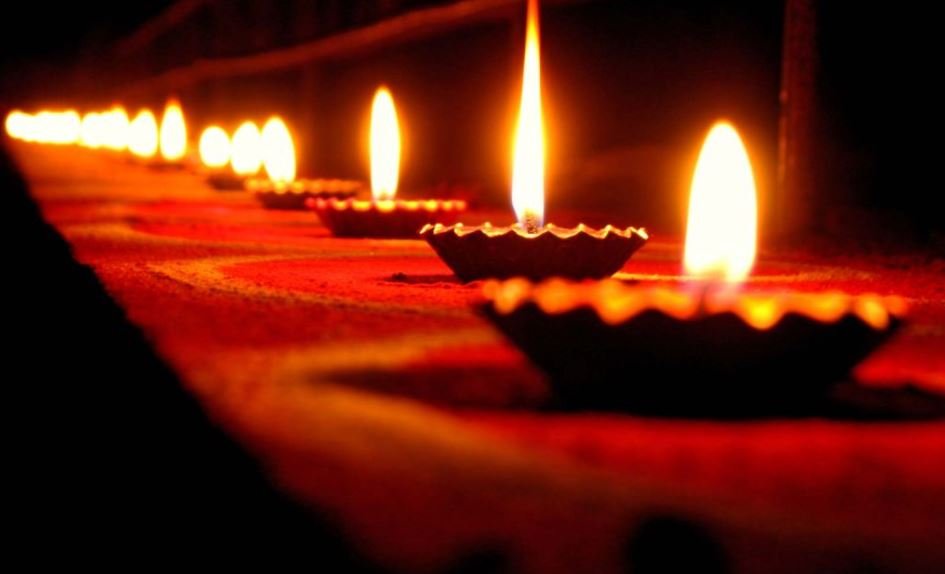
| First Day: | Dhanatrayodashi |
| Third Day: | Sukhsuptika |
| First Day: | Dhanteras, Yamadeepdaan |
| Second Day: | Mahanisha / Kali Puja |
| Third Day: | Diwali, Mahanisha / Kali Puja |
| Fifth Day: | Bhai Dooj |
| First Day: | Dhanteras, Dhanatrayodashi |
| Second Day: | Choti Diwali |
| Third Day: | Laxmi Pujan |
| Fourth Day: | Goverdhan puja |
| Fifth Day: | Bhai Dooj, Godhan, Chitragupt puja (Dawat puja) |
| First Day: | Dhanteras |
| Second Day: | Choti Diwali, Roop Chaturdashi |
| Third Day: | Laxmi Pujan, Bandi Chhor Diwas |
| Fourth Day: | Goverdhan puja, Annakoot |
| Fifth Day: | Bhai Dooj |
| First Day: | Dhanteras, Dhan Teyras |
| Second Day: | Kali Choudas |
| Third Day: | Chopda Pujan, Deva Divali, Badhausar |
| Fourth Day: | Bestavarsh, Gudi Padava, Muharat Pujan |
| Fifth Day: | Bhaubeej, Bhathru Dwithiya |
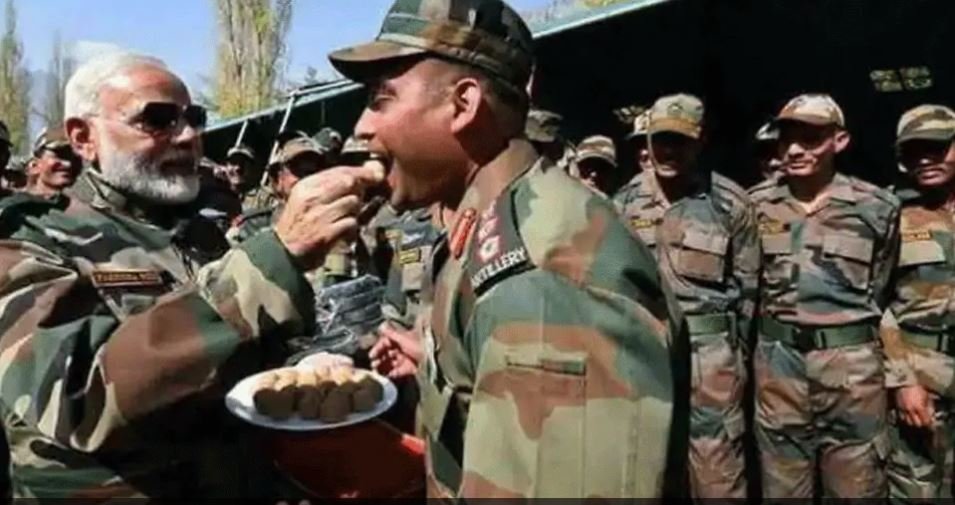
| First Day: | Dhanteras |
| Second Day: | Mahanisha / Kali Puja |
| Third Day: | Laxmi Pujan |
| Fifth Day: | Bhai Phota |
| First Day: | Dhanteras, Yamadeepdaan |
| Second Day: | Mahanisha, Kali Puja |
| Third Day: | Laxmi Pujan |
| Fourth Day: | Goverdhan puja, Annakoot |
| Fifth Day: | Bhai Dooj,Bhatri Ditya |
| First Day: | Dhanteras, Dhantheran, Dhanatrayodashi |
| Second Day: | Roop Chaturdashi, Kali Choudas |
| Third Day: | Laxmi Pujan, Chopda Pujan, Deva Divali |
| Fourth Day: | Muharat Pujan, Kali Choudas |
| Fifth Day: | Yamadwitheya, Bhai Dooj |
| First Day: | Dhanteras, Yamadeepdaan |
| Second Day: | Choti Diwali, Roop Chaturdashi |
| Third Day: | Laxmi Pujan, Bandi Chhor Diwas |
| Fifth Day: | Bhaiya Dooj |
| First Day: | Dhantheras, Dhanatrayodashi, Yamadeepdaan |
| Second Day: | Choti Diwali, Roop Chaturdashi |
| Third Day: | Laxmi Pujan, Chopda Pujan |
| Fourth Day: | Goverdhan puja, Annakoot |
| Fifth Day: | Bhai Phota |
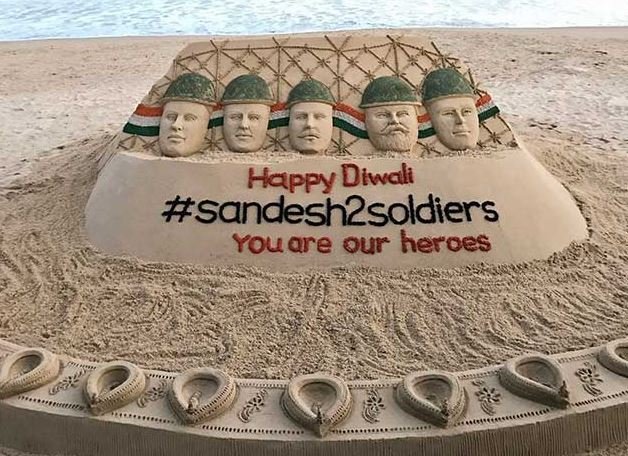
| First Day: | Asweyuja Bahula Thrayodasi, Dhanatrayodashi, Yamadeepdaan |
| Second Day: | Narkachaturdashi, Divvela Panduga / Divili Panduga |
| Third Day: | Kaumudi Mahostavam, Karthigai Deepam |
| Fourth Day: | Bali Padyam / Bali Pratipada |
| Fifth Day: | Divvela panduga/ divili panduga, Yamadwitheya |
| First Day: | Dhanatrayodashi |
| Second Day: | Narkachaturdashi |
| Third Day: | Laxmi Pujan |
| Fourth Day: | Gudi Padava, VarshaPratipada / Pratipad Padwa |
| Fifth Day: | Bhaubeej / Bhav-Bij |
| First Day: | Dhanatrayodashi |
| Second Day: | Narak Chaturdashi, or Choti Diwali, Roop Chaturdashi, Kali Choudas |
| Third Day: | Laxmi Pujan, Chopda Pujan |
| Fourth Day: | Diwali cha padva or Balipratipada, Gudi Padava, VarshaPratipada / Pratipad Padwa |
| Fifth Day: | Bhaubeej / Bhav-Bij |
| First Day: | Dhanteras |
| Second Day: | Choti Diwali, Roop Chaturdashi |
| Third Day: | Laxmi Pujan, Chopda Pujan |
| Fourth Day: | Goverdhan puja, Annakoot |
| Fifth Day: | Bhai Dooj, Bhatri Ditya |

| First Day: | Asweyuja Bahula Thrayodasi, Dhanatrayodashi, Yamadeepdaan |
| Second Day: | Narkachaturdashi |
| Third Day: | Kaumudi Mahostavam, Balindra Pooja, Karthigai Deepam, Thalai Deepavali |
| Fourth Day: | Bali Padyam / Bali Pratipada |
| Fifth Day: | Yamadwitheya, Bharti Ditya |
| First Day: | Asweyuja Bahula Thrayodasi, Dhanatrayodashi, Yamadeepdaan |
| Second Day: | Narkachaturdashi |
| Third Day: | Kaumudi Mahostavam, Balindra Pooja, Karthigai Deepam, Thalai Deepavali |
| Fourth Day: | Bali Padyam / Bali Pratipada |
| Fifth Day: | Yamadwitheya, Bhathru Dwithiya |
| First Day: | Asweyuja Bahula Thrayodasi, |
| Dhanatrayodashi, Yamadeepdaan | |
| Second Day: | Narkachaturdashi |
| Third Day: | Kaumudi Mahostavam, Balindra Pooja, Karthigai Deepam, Thalai Deepavali |
| Fourth Day: | Bali Padyam / Bali Pratipada |
| Fifth Day: | Yamadwitheya, Bharti Ditya |
Bhagwan “Ram” or “Rama”, is the embodiment of truth, of morality, the ideal son, the ideal husband, and above all, the ideal king for all Hindus. After ten days of fierce war with Ravana, the victorious Bhagwan Ram, Bhaiya Laxman, and Maa Sita prepared to return to Ayodhya. There are joyous shouts of “Victory to Rama, Veer Hanuman ki Jai – Victory to Hanuman“. Gods from Heaven poured flowers and garlands to celebrate and show their pleasure.

In Ayodhya Bharat, Ram’s beloved brother eagerly waited for the arrival of Bhagwan Ram, Bhaiya Laxman, and Maa Sita. He had counted every day of those fourteen years that Bhagwan Ram had to suffer in the forest as a result of his mother’s folly. He had ruled as the representative of Bhagwan Ram, living like a monk (Sanyasi). Ram’s wooden shoes adored the throne during his absence.
Bharat encouraged the people of Ayodhya to celebrate the return of Ram with great splendor. The whole Ayodhya was eager to welcome her heroes. The whole city was decorated with flowers and garlands. Every house adored a beautiful look of cleanliness and was lighted with Diva (Earthen lamps). Perfumes and scents filled the air. Every street was cleaned and watered, and decorated with hand-painted colorful designs.
Diwali also signifies the Harvest Festival known as the Kharif season when a fresh crop of rice is available. Every harvest spelled prosperity. This celebration was first started in India by farmers after they reaped their harvests. They celebrated with joy and offered praises to God for granting them a good crop. On the second day of Diwali, a ritual of a harvest festival is performed by worshiping the Goddess of Wealth, Lakshmi, and performing Aarti. In Western and Central India, delicacies are prepared from pounded semi-cooked rice called Poha or Pauva on this day.
The day following Diwali is called “Kartik Shuddh Padwa“. As per Hindu scriptures, on this day King Bali would come out of Pathal Loka and rule Bhulok as per the boon given by Bhagwan Vishnu. Hence, it is also known as “Bali Padyami”.
This day also marks the coronation of King Vikramaditya and Vikaram-Samvat was started from this Padwa day. Gudi Padwa is symbolic of love and devotion between the wife and husband.
In North India, Diwali festivities start with Navratris. All the festivals like Durga Pooja, Dussehra, Karwa Chauth, Ahoi Ashtami are celebrated before Diwali. The whole town is decorated like a bride. Lighting up of homes, pathways, temples, and even government buildings, with hundreds of small clay lamps and candles. Firecrackers thought to frighten away evil spirits are also used with abandon, which makes this festival for children.
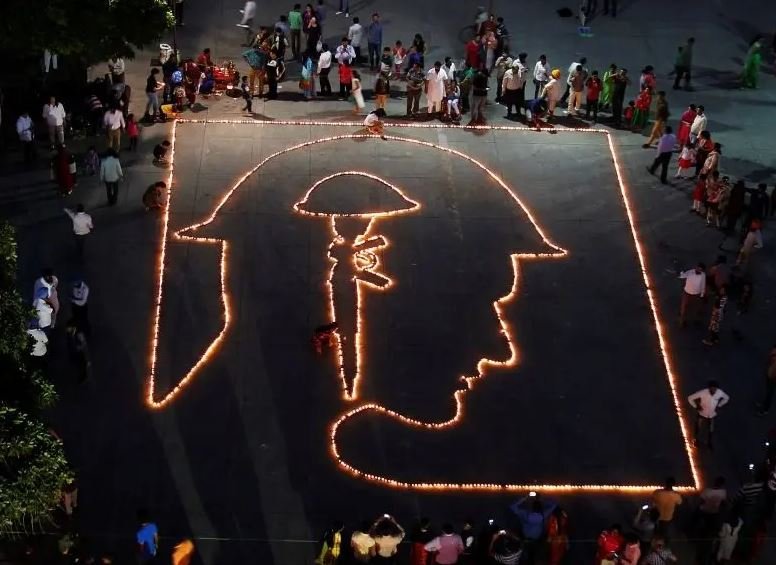
On Diwali day, shops remain open till late afternoon, believing that good sales on Diwali day predict a prosperous year ahead. In the corporate sector, the process of buying and distributing Diwali gifts begins several days before the big day and slowly picks up pace. Sweets and dry fruits are the most common gifts, as are silver coins. But gifts also range from silver dishes and other household gifts to suit-pieces.
Houses are decorated and a Lakshmi puja is organized. In some houses, there is a ritual of immersing a silver coin in a tumbler of milk. The milk is then sprinkled lightly in the rooms of the house. Prasad is kept in front of the idol throughout the night.
Some of the Diwali delicacies made are: “Paranthas” eaten with Shakar (jaggery powder) and ghee; “Pakodas” eaten with Chutney; “Mal Podas” eaten with a special Chutney.
However, the Diwali celebration also varies as per the tradition and culture of each state.
The much-celebrated Kali Pooja of West Bengal is done on Diwali Festival as it is also celebrated on the Amavasya or the no moon night in the Hindu month of Kartik. Gusto and enthusiasm for Kali Puja in West Bengal is the same as seen for Diwali in the rest of India. It is celebrated with much gusto and enthusiasm. Just as people in North India light lamps to honor Lakshmi Maa during Lakshmi Puja, people in West Bengal celebrate Kali Puja by lighting lamps in honor of Maa Kali. Houses are decorated and elaborate Rangoli patterns are drawn in front of houses and courtyard. Elaborate Kali Puja is carried out during the evening. Maa Kali is worshiped as the Mother Goddess who is known to destroy all evil and is a fierce fighter for the cause of justice. Popular guises and names for Maa Kali are Shyama, Adya Maa, Tara Maa, Dakshina Kalika Maa, Chamundi Maa, Shyama Kali and Bhadra Kali Maa.
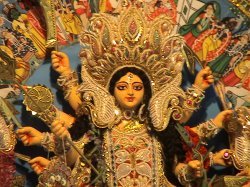
As Maa Kali is regarded as the Goddess to be feared Bengalis leave no stone unturned in carrying out a special Pooja for her. Through Puja, people seek happiness, prosperity, and protection against hardships.
According to legends once the demons named Shambhu and Nishambhu grew in force and pose a challenge to Indra, King of Gods, and his Kingdom of Heaven. Gods sought protection from Mahamaya Durga, the Goddess of Shakti or Power. At this stage, Maa Kali was born from Durga’s forehead as “Kal Bhoi Nashini” to save heaven and earth from the growing cruelty of the demons.
After slaughtering the demons, Kali made a garland of their heads and wore it around her neck. In the bloodbath, she lost control and started killing anyone who came her way. There was chaos all around. To stop her, Lord Shiva threw himself under her feet. Shocked at this sight, Kali stuck out her tongue in astonishment and put an end to her killing spree. The well-known picture of Kali Ma shown with her tongue hanging out actually depicts the moment when she steps on Lord Shiva and repents.
Deepawali is one of the oldest rituals for Kashmiri Pundits. There is mention of its celebrations in Nilmat Puran. It was then celebrated as Sukhsuptika which literally means sleep with happiness. The celebration would start from Ekadashi and last till Amavasya. On Amavasya elders of the family would keep a fast and worship goddess Lakshmi after sunset. Earthen lamps are placed in temples, on the road crossings, cremation grounds, banks of rivers, streams, and lakes hill houses, at the foot of trees, cow sheds, courtyards, and shops. People would wear new clothes and listen to music.
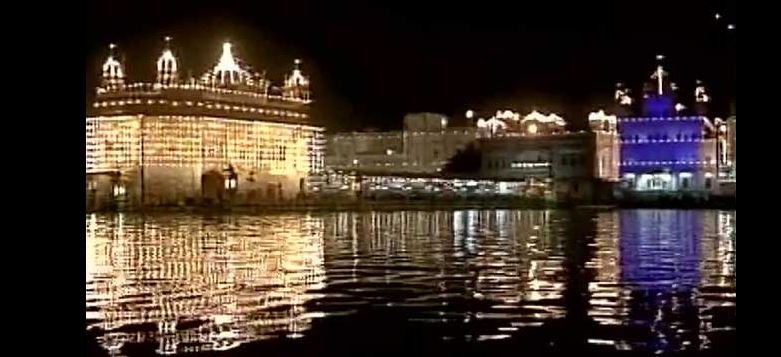
Diwali is celebrated by the Sikhs, they make a trip to the Temple or Gurudwara, and lighting candles in the evening, and let off firecrackers as well.
Diwali is also celebrated as the anniversary of Guru Har Gobind Ji, who was released from the prison at Gwalior Fort. In was on this day in 1619 A D. Diwali of Amritsar was out-of-the-world. On Diwali, the entire Golden Temple is illuminated with traditional lamps of different colors. The reflection of the Golden Temple, “Darbar Sahib” in the shimmering water of the holy pool binds the eye, to the many-a-splendor pageant. Fireworks displayed in a traditional manner recreates the glory of the times gone past.
In Himachal Pradesh, Diwali is celebrated with great enthusiasm and People are very particular on Diva Pattern. Every indoor corner of the house is lit up carefully, and a large Diya, bigger than usual, is kept in the temple or puja place and is guarded all night.
Like Himachal Pradesh, in the states of Bihar and Uttar Pradesh, Diya Pattern is very important and decorated as per tradition and culture. It is not always one large Diya, but four smaller ones, intricately shaped, which surround the puja place and the women of the house sit guard all night to ensure they do not go out. Even the Diyas placed outside, around the house are jealously guarded and re-lit at once if the wind puts them out.
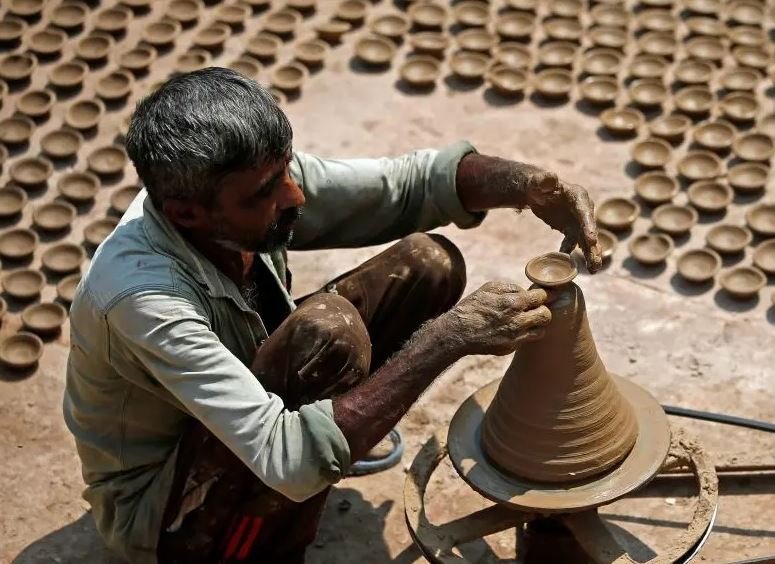
In South India, the Diwali festival often commemorates the conquering of the Asura Naraka, a powerful king of Assam, who imprisoned tens of thousands of inhabitants. It was Krishna who finally subdued Naraka and freed the prisoners. Diwali Festival in the south is celebrated in the Tamil month of Aipasi (Thula month) ‘Naraka Chaturdashi’ Tithi, preceding Amavasya. The preparations begin the day before when the oven is cleaned, smeared with lime, four or five Kumkum dots are applied, and then it is filled with water for the next day’s oil bath. The house is washed and decorated with Kolam (rangoli) patterns with Kavi (red oxide). In the pooja room, betel leaves, betel nuts, plantain fruits, flowers, sandal paste, Kumkum, gingelly oil, turmeric powder, scented powder are kept. Crackers and new dresses are placed on a plate after smearing a little Kumkum or sandal paste.
Deepavali celebrations begin early in the morning. The eldest family member applies sesame oil on the heads of all the family members. Then, it’s off for a bath, beginning with the youngest in the family. They emerge with new clothes and a look of anticipation at the thought of bursting crackers, which symbolizes the killing of the demon king Narakasura.
Then everyone drinks Lehiyan, the bitter concoction, to cleanse the system of its festive over-eating! Then to the crackers.
A puja is performed for the family deities in the morning. Breakfast consists of murukku, a sweet dish, and, of course, Idli or Dosa.
Some communities believe that when Narakasura was to be killed, Lord Krishna asked him his last wish. Narakasura replied that he wanted to enjoy the last day of his life in a grand manner and Diwali was celebrated. That was the beginning and the practice continued. In the evening, lamps are lighted and crackers are burst. As most of the cracker manufacturing units are in Tamil Nadu, there is no dearth of fireworks here. During Thalai Deepavali, the newlyweds go to the bride’s parental home for revelry. Taking blessings from the elders, they burst the first crackers of the day.
Mark Twain has rightly said once “India is the cradle of the human race, the birthplace of human speech, the mother of history, the grandmother of legend, and the great grandmother of tradition.”
I Wish All My Hindu Brothers And Sisters “A Very Happy, Prosperous and Blissful Diwali”
DISCLAIMER: The author is solely responsible for the views expressed in this article. The author carries the responsibility for citing and/or licensing of images utilized within the text.
